SNU Museum of Art (MoA) is holding a photo exhibition on the earliest moments of the College of Fine Arts to commemorate SNU’s 70th anniversary.
The College of Fine Arts moved several times before finally settling down in its current location in Gwanak-gu in 1976. The college was established in August 1946 in Jongno-gu, Seoul, with just three majors: Painting, Sculpture and Design. After the Korean War broke out, SNU relocated to Busan in 1951, but returned to Seoul two years later. “Capturing the Presence: The Old Days of the College of Fine Arts” displays more than 100 daily life moments in the College of Fine Arts from 1953 to 1965, after the college’s return to Seoul.
Most of the exhibited photos were taken by SUNG Nak-in (1927-2011), one of the first 90 students admitted to the SNU College of Fine Arts in September 1946. Sung spent his undergraduate years in the Department of Sculpture until 1951, and continued with graduate studies at SNU as well. After his death, Sung’s remaining family donated more than 4,000 of his photos to SNU. “Capturing the Presence: The Old Days of the College of Fine Arts,” which is open from November 8 to 30, is the first time Sung’s photos are being released to the public.
Sung’s photos feature College of Fine Arts students who dreamed of becoming great artists during a period of poverty and social unrest, as the country struggled to recover from the Korean War.
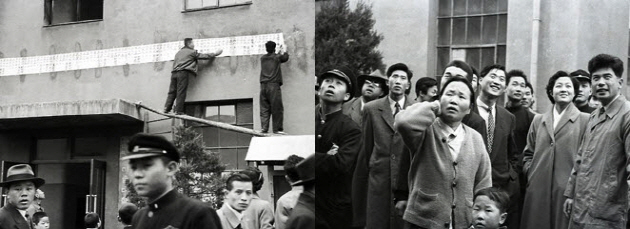
A glimpse of the crowd gathered in front of the list of students accepted to the College of Fine Arts in March 1956. The handwritten admission list was posted in a long horizontal line on the exterior of a university building.
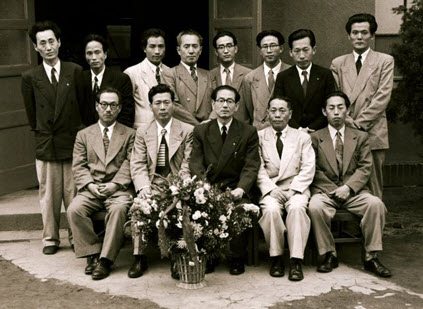
Group photo of the College of Fine Arts professors commemorating the 5th Art Exhibition in 1959. Many of these professors, such as KIM Chong Yung, KIM Se-jung, Thomas CHANG and KIM Heung-Soo, were eminent pioneers of contemporary Korean art.
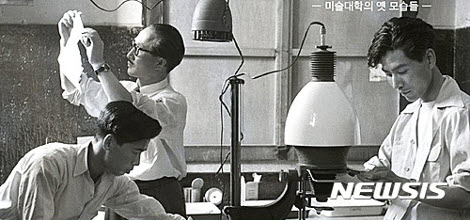
Professor LIM Eung-Sik’s photography class. Lim was a crucial figure in the development of Korean photography.
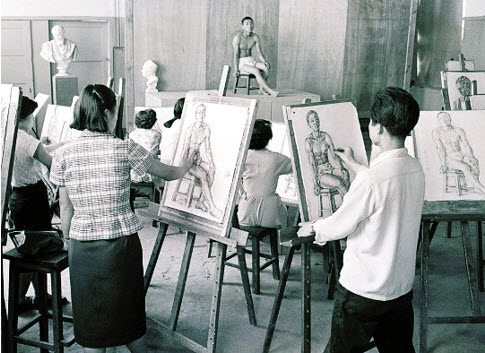
Students drawing a figure model during class. While some photos in the exhibition display renowned Korean artists, other photos capture ordinary moments of ordinary individuals whose names are unknown. SNU MoA believes that “it is also meaningful to trace images of individuals who gave up on becoming famous artists due to harsh social circumstances or for personal reasons.”
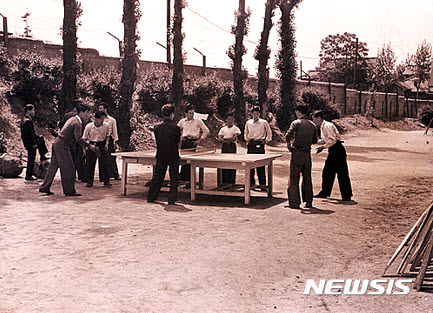
Students playing table tennis in front of the Department of Aesthetics building. Until it was redirected to the College of Humanities in 1960, the Department of Aesthetics was a part of the College of Fine Arts. This area was the meeting place for the Department of Sculpture and Department of Aesthetics students, and is also where the College of Fine Arts drama club was formed.
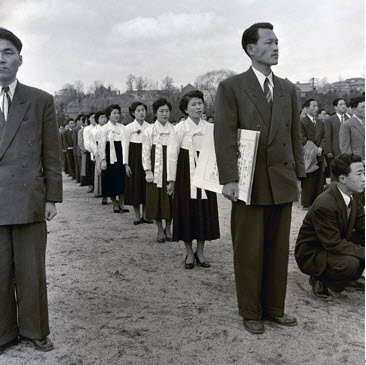
10th Graduation Ceremony in 1956. The first group of College of Fine Arts graduates in 1950 consisted of only 11 students out of the initial 90, because poor social conditions made it difficult for most students to make it to graduation. As Korean society became more stable, the number of graduates increased. In 1965, a total of 120 students including two master’s degree students successfully graduated from the College of Fine Arts.
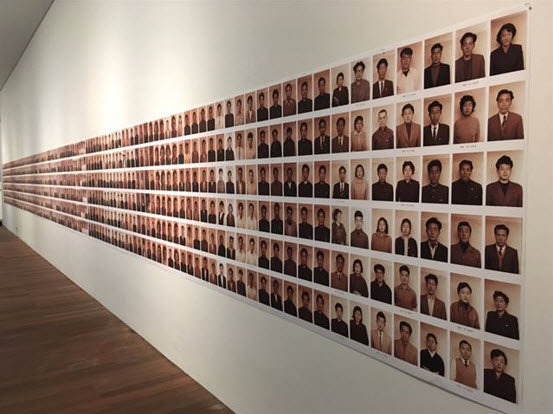
Identification photos of 800 College of Fine Arts students. Thomas Chang, the first Dean of Fine Arts, suggested that freshmen students take these photos to include in the student directory. Today the names and matriculation year of most of these students remain unknown. Hoping to identify them, SNU MoA proposed that any of these former students visiting the exhibition in person will be presented with their old photo. MoA director CHUNG Young Mok said, “Currently we cannot identify all individuals in the photos, but we wish to fill in the blanks through visitors of this exhibition.”
Written by YOON Jiwon, SNU English Editor, jiwonyoon@snu.ac.kr
Reviewed by Professor Travis Smith, Department of Asian Languages and Civilizations, tlsmith@snu.ac.kr

